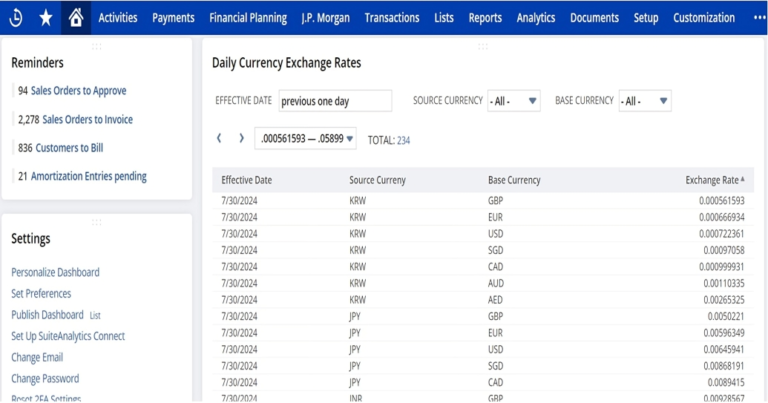A007: Building a Competent Team: How to Master Netsuite For Customers
In today’s lightning-fast business landscape, your organization’s success hinges on more than just tools, it’s how effectively your team can wield them. NetSuite, the game-changing cloud-based ERP solution, is a force to be reckoned with, but only if your team knows how to unleash its full potential. Building a skilled team through impactful NetSuite user training is not an option it’s an absolute necessity. This blog post will serve as your guide to crafting a training program that not only imparts knowledge but also empowers your team to propel your business forward. Get ready to witness a transformation that will ignite productivity, streamline operations, and drive growth.
Valuable Content:
The Importance of Effective NetSuite User Training
NetSuite’s comprehensive capabilities can transform your operations, but without proper training, its complexity can overwhelm your team. Poorly trained users can lead to mistakes, inefficiencies, and frustration, which can ultimately impact your bottom line. A well-structured training program ensures that your team can confidently navigate NetSuite, leveraging its features to streamline processes, improve accuracy, and make data-driven decisions.
Step 1: Assessing Training Needs
The first step in developing an effective training program is understanding the specific needs of your team. Not every user requires the same level of training. For instance, your finance team might need in-depth knowledge of NetSuite’s financial management modules, while your sales team might focus on CRM functionalities. Conducting a thorough needs assessment will help you tailor your training program to address these diverse requirements.
Practical Tip: Survey Your Team
Create a survey to gather information about your team’s current knowledge and comfort level with NetSuite. Ask them to identify areas where they feel confident and areas where they need more support. This feedback will be invaluable in designing a targeted training program.
Step 2: Designing a Comprehensive Training Program
Once you have identified the training needs, it’s time to design a program that covers all essential aspects of NetSuite. A successful training program should be:
- Role-Specific: Tailor the training content to the specific roles within your organization.
- Interactive: Include hands-on activities, simulations, and real-life scenarios to enhance learning.
- Continuous: Training shouldn’t be a one-time event. Establish ongoing learning opportunities to keep skills sharp and updated.
Relatable Example: The Power of Role-Based Training
Consider this: Your accounting team has mastered NetSuite’s invoicing feature, but your sales team is struggling with order management. A role-specific training module that focuses on the sales team’s needs can resolve this issue, leading to better sales order processing and fewer errors.
Step 3: Leveraging Different Training Formats
Everyone learns differently, so offering multiple training formats can increase engagement and retention. Consider incorporating the following:
- Online Tutorials and Webinars: Ideal for self-paced learning.
- In-Person Workshops: Great for interactive learning and immediate feedback.
- Mentorship Programs: Pair less experienced users with NetSuite power users within your organization.
Step 4: Measuring Training Effectiveness
Training is only as good as the results it produces. Establish metrics to evaluate the effectiveness of your training program. These can include:
- User Proficiency Tests: Assess how well users have grasped the material.
- Performance Metrics: Monitor improvements in accuracy, efficiency, and productivity post-training.
- Feedback Loops: Regularly collect feedback from participants to continuously improve the training program.
Step 5: Reinforcing Learning Post-Training
The real challenge begins after the training sessions are over. Reinforcing what was learned is crucial to ensuring long-term retention and application. Encourage ongoing practice, provide access to resources like quick-reference guides, and hold regular refresher courses.
Personal Touch: Success Story from the Field
At SuitePen, we implemented a continuous learning strategy after our initial NetSuite training. A year later, not only did our data entry errors decrease by 30%, but our overall productivity increased by 25%. This reinforced our belief that learning doesn’t stop when the training ends—it’s a continuous journey.
Conclusion: Empower Your Team, Empower Your Business
Effective NetSuite user training is an investment that pays dividends in efficiency, accuracy, and job satisfaction. By developing a comprehensive training program tailored to your team’s needs, leveraging diverse training formats, and reinforcing learning, you’ll build a competent team capable of driving your organization forward with confidence.
Interactive Quiz:
Which training format is best for interactive learning?
(A) Instructor-led training
(B) E-learning
(C) Blended learning
(D) On-the-job training
Call to Action
Ready to empower your team with the skills they need to master NetSuite? Start by assessing your training needs today. Download our free training needs assessment template and take the first step toward building a competent, confident team.






